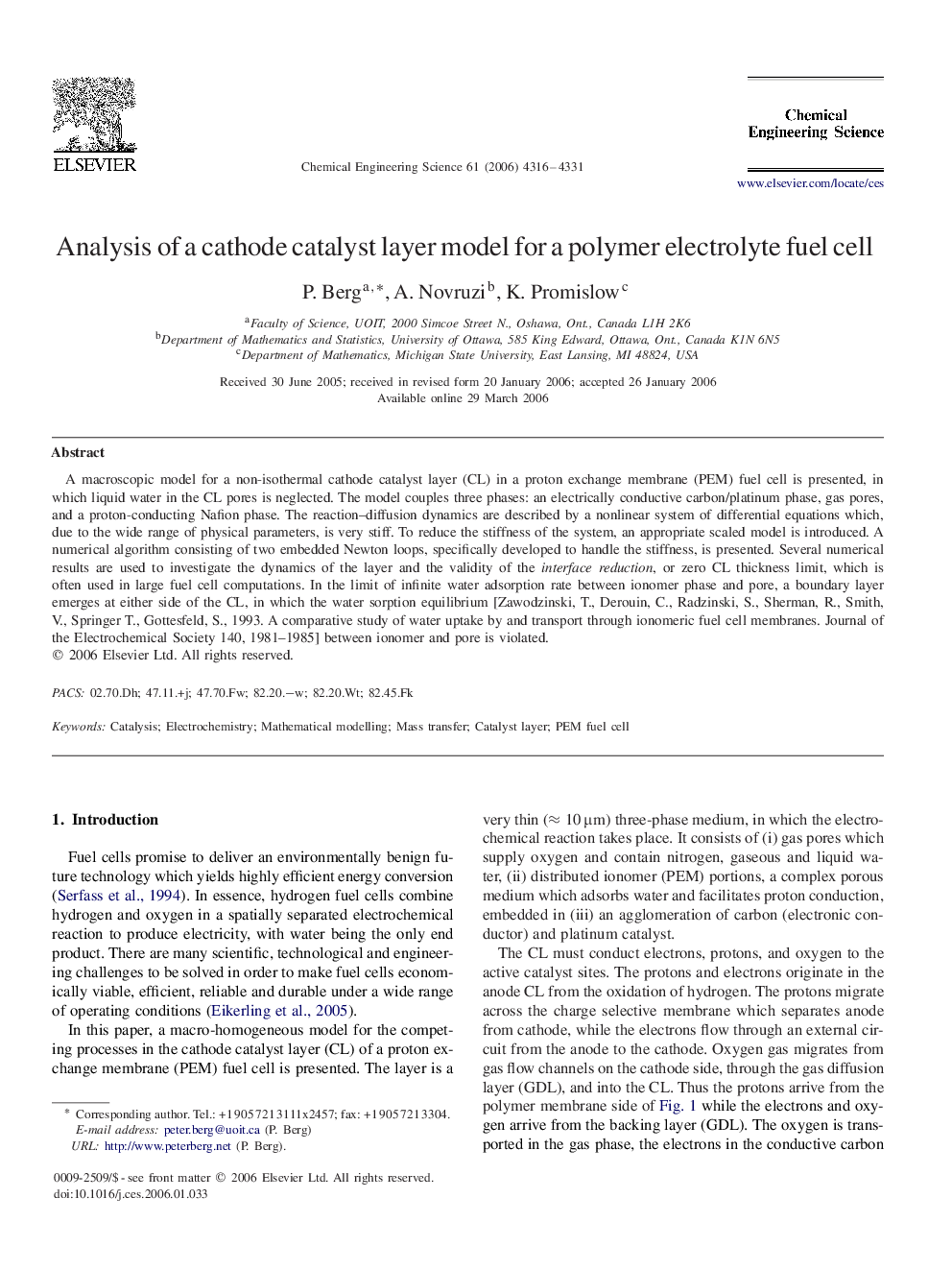| Article ID | Journal | Published Year | Pages | File Type |
|---|---|---|---|---|
| 159699 | Chemical Engineering Science | 2006 | 16 Pages |
A macroscopic model for a non-isothermal cathode catalyst layer (CL) in a proton exchange membrane (PEM) fuel cell is presented, in which liquid water in the CL pores is neglected. The model couples three phases: an electrically conductive carbon/platinum phase, gas pores, and a proton-conducting Nafion phase. The reaction–diffusion dynamics are described by a nonlinear system of differential equations which, due to the wide range of physical parameters, is very stiff. To reduce the stiffness of the system, an appropriate scaled model is introduced. A numerical algorithm consisting of two embedded Newton loops, specifically developed to handle the stiffness, is presented. Several numerical results are used to investigate the dynamics of the layer and the validity of the interface reduction, or zero CL thickness limit, which is often used in large fuel cell computations. In the limit of infinite water adsorption rate between ionomer phase and pore, a boundary layer emerges at either side of the CL, in which the water sorption equilibrium [Zawodzinski, T., Derouin, C., Radzinski, S., Sherman, R., Smith, V., Springer T., Gottesfeld, S., 1993. A comparative study of water uptake by and transport through ionomeric fuel cell membranes. Journal of the Electrochemical Society 140, 1981–1985] between ionomer and pore is violated.
